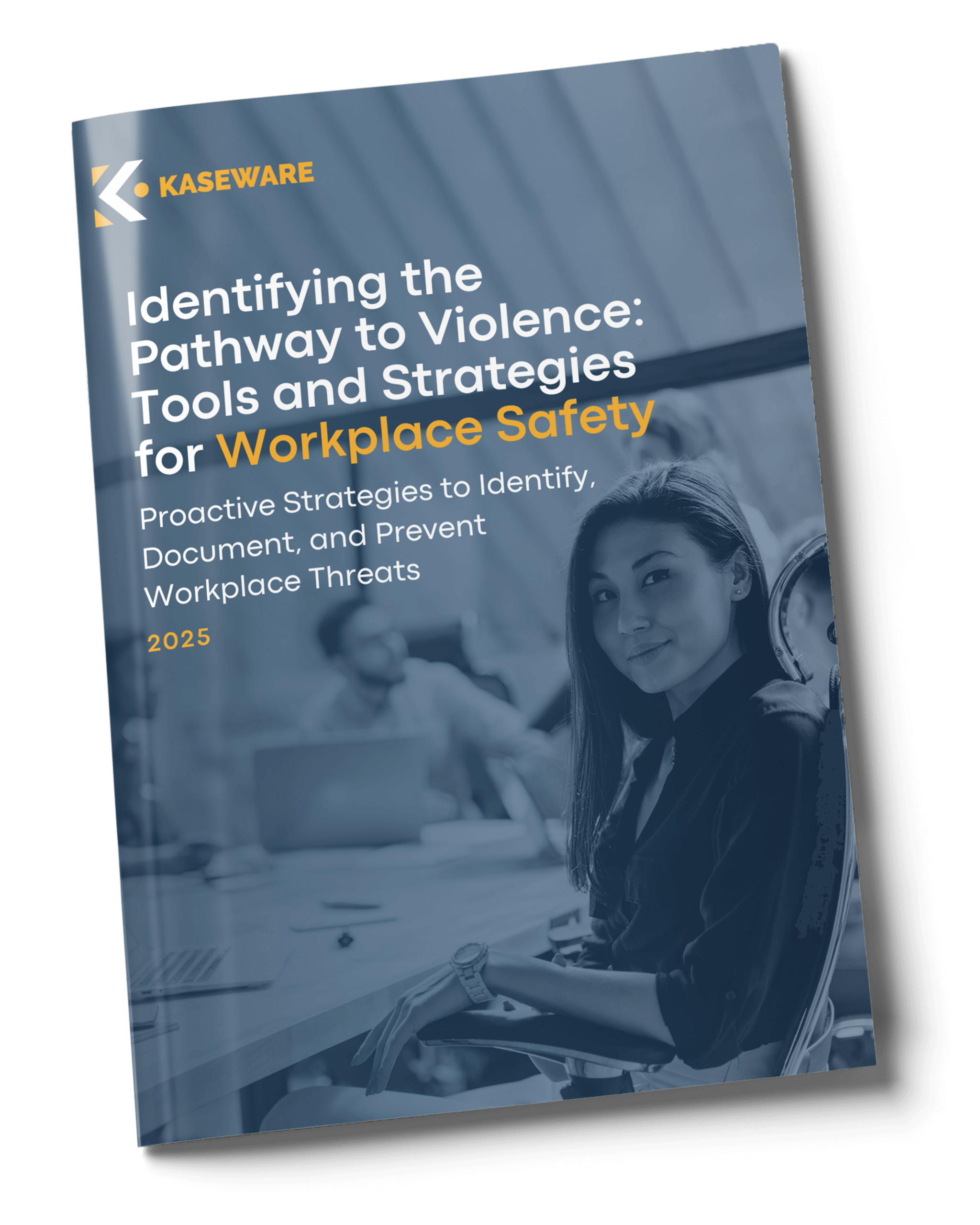GUIDE
Identifying the Pathway to Violence
Tools and Strategies for Workplace Safety

Workplace violence is an increasingly pressing issue, affecting businesses across all industries. From verbal threats to physical attacks, incidents of workplace violence have far-reaching consequences for employees and organizations alike.
A well-structured prevention strategy not only safeguards employees, but also enhances organizational stability and resilience. This guide provides a framework for developing an effective workplace violence prevention program, covering risk assessment, training, reporting mechanisms, and compliance with evolving legal requirements.
What’s In the Guide:
- Workplace Violence Consequences: These extend beyond immediate physical harm, encompassing significant financial burdens like legal fees and lost productivity, as well as reputational damage impacting recruitment and customer trust. A proactive prevention strategy mitigates these far-reaching consequences.
- Types of Workplace Violence: Understanding the distinct categories, such as criminal intent, customer/client, worker-on-worker, and personal relationship violence, is crucial for tailored prevention efforts. Each type presents unique challenges and requires specific response protocols.
- Effective Prevention Tools: A comprehensive approach necessitates a combination of technological and human resources, including tools for documentation and analysis, detection and reporting, and post-incident investigation, alongside expert guidance and collaborative partnerships. These resources enable proactive risk assessment and timely intervention.
- Legal and Regulatory Landscape: Evolving regulations, like California’s SB 553 and Texas’ SB 240, mandate comprehensive prevention plans, requiring employers to stay informed and compliant. Adherence to these legal requirements is crucial for minimizing liability and ensuring a safe workplace.
- Benefits of a Comprehensive Strategy: Beyond protecting lives and reducing financial risks, a robust program fosters a positive work environment, boosting employee morale, enhancing retention, and ensuring business continuity. Investing in prevention is a strategic investment in organizational well-being and success.